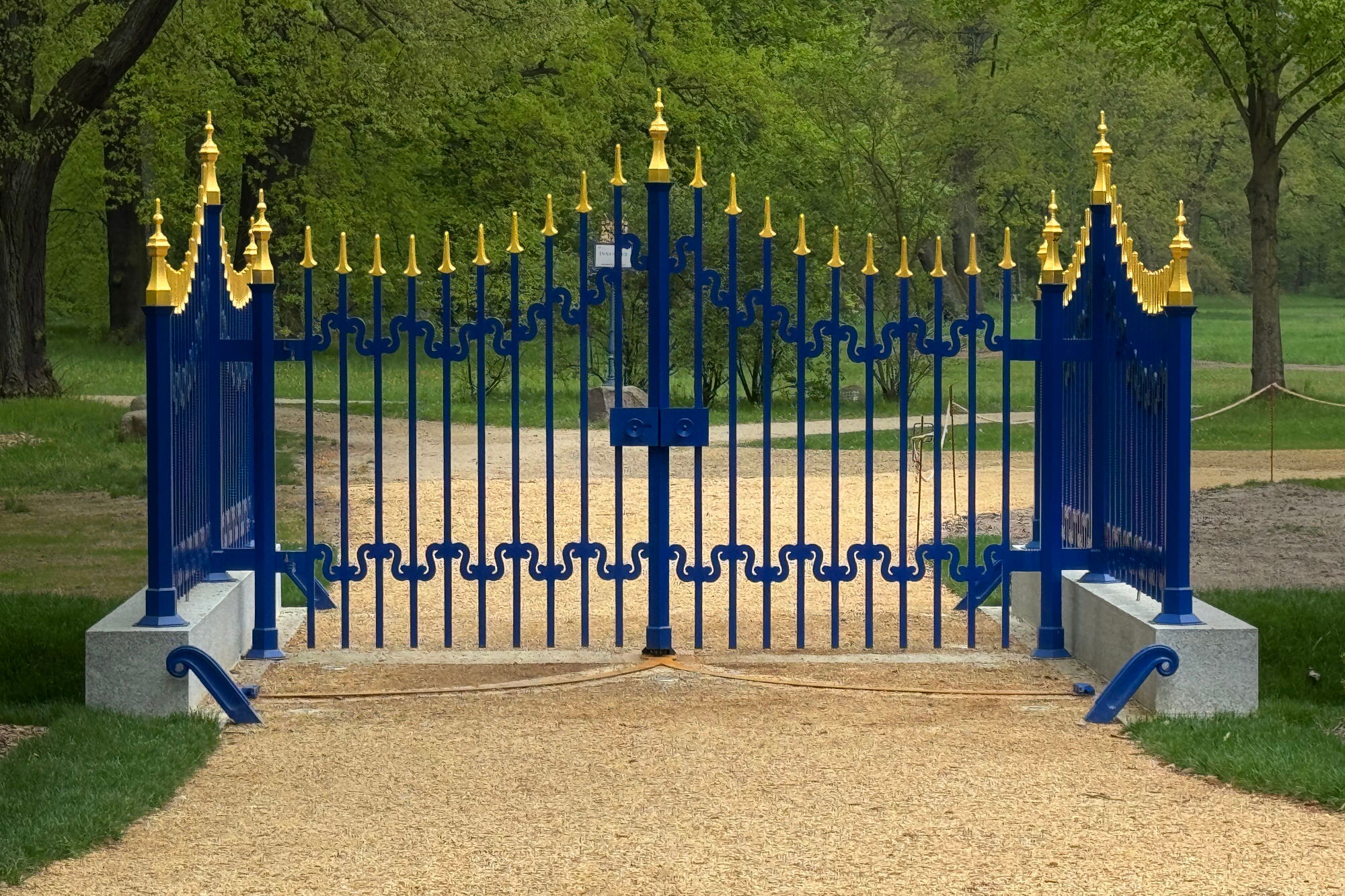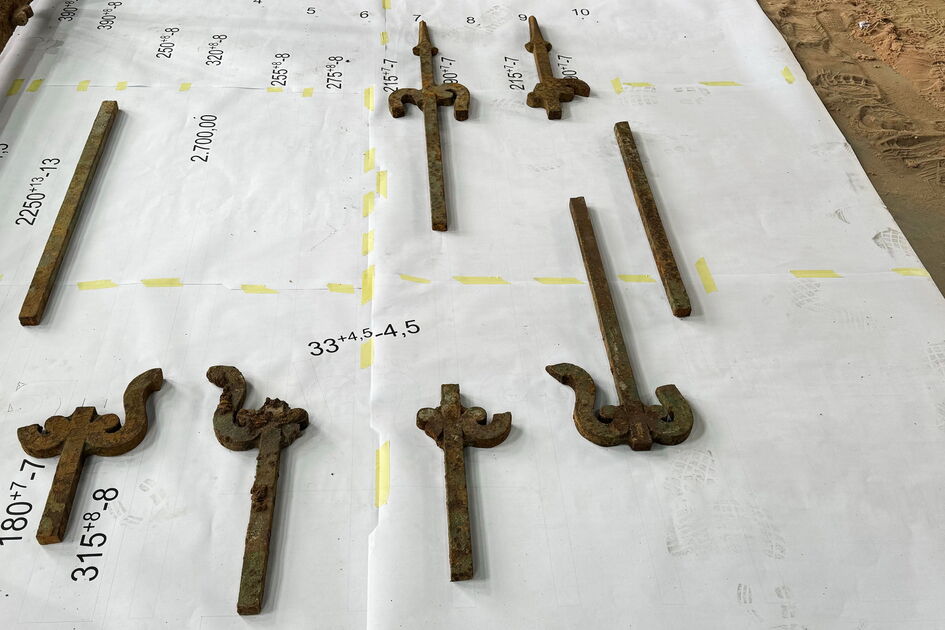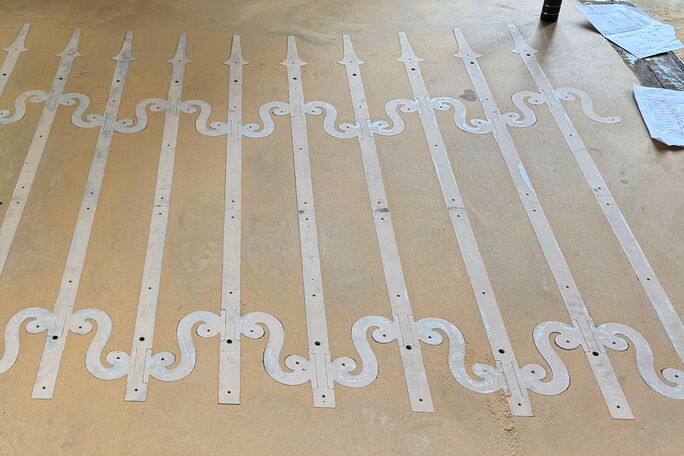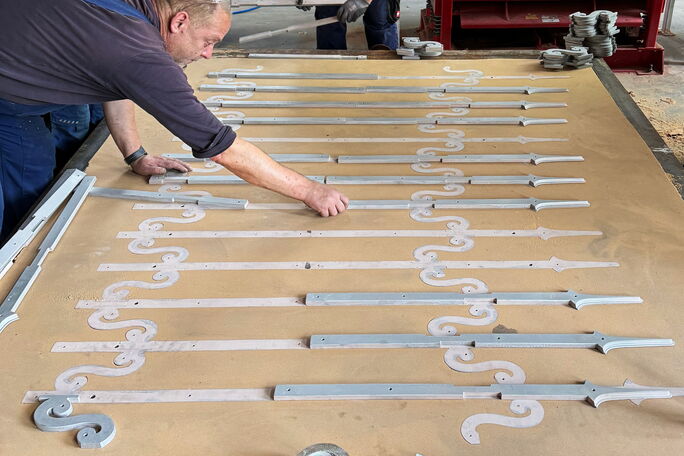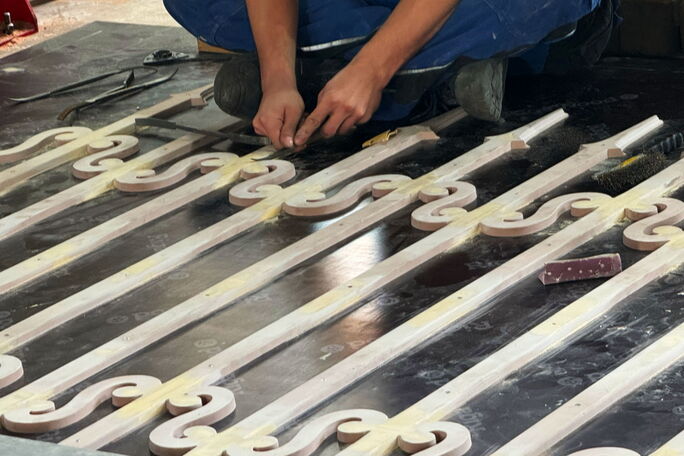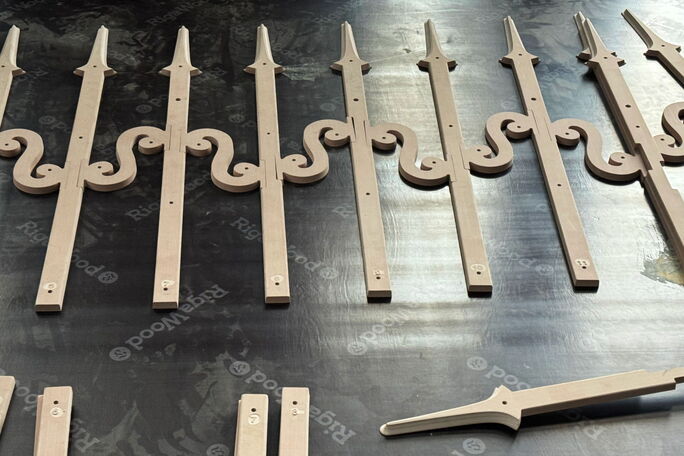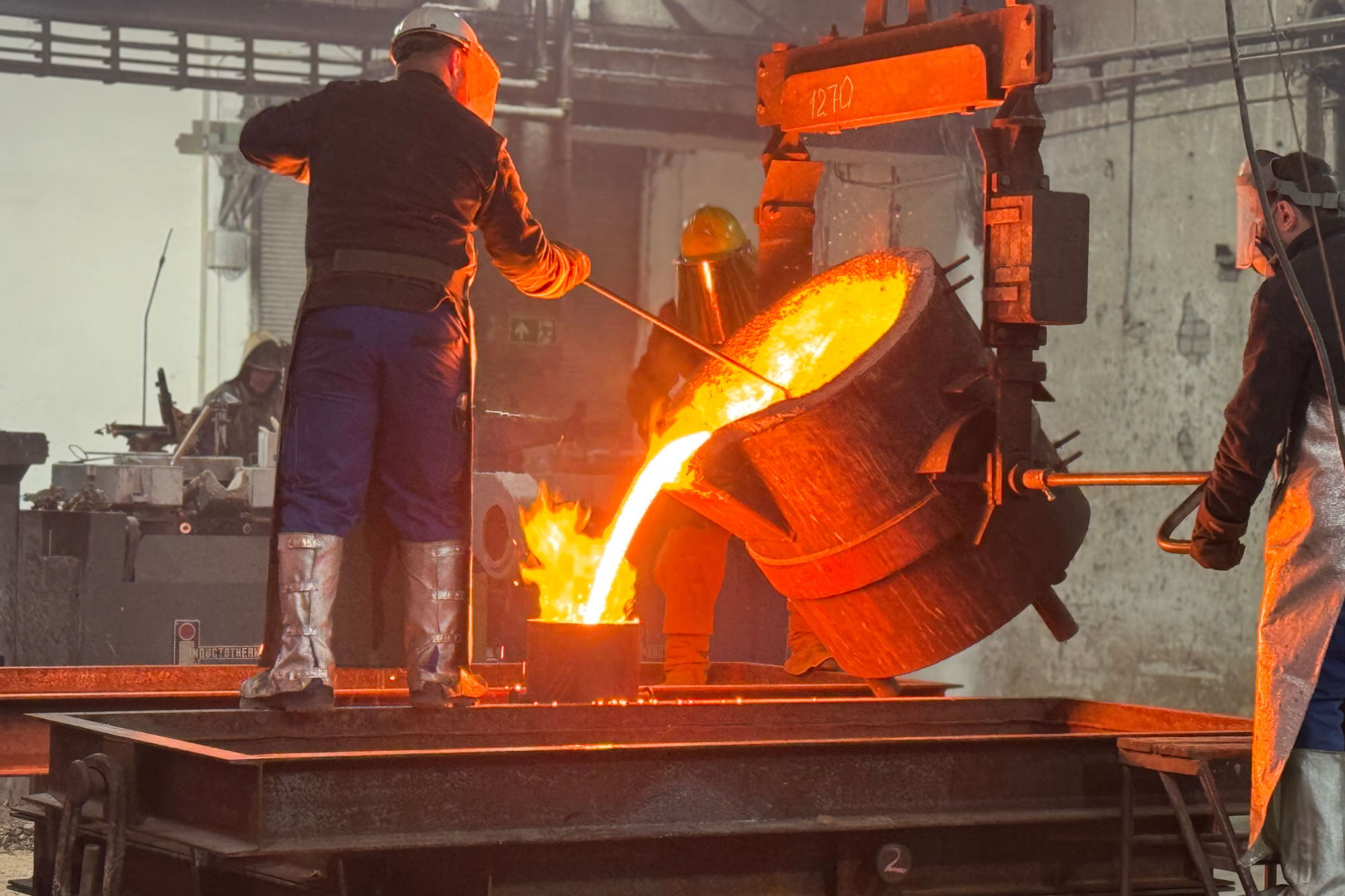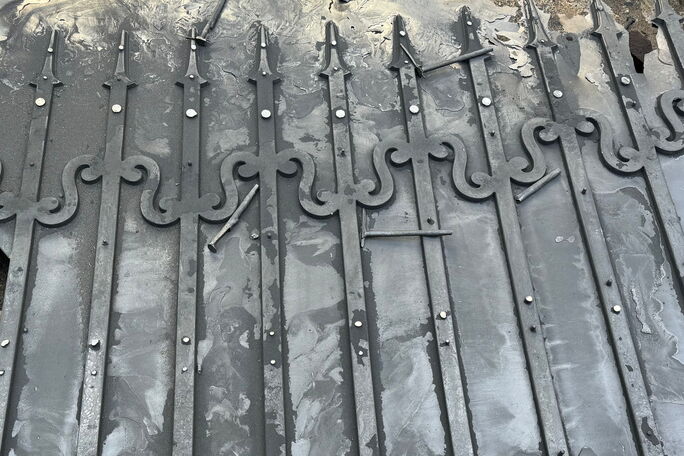A gateway through time
The reconstruction of the Branitz Park Gate
In the middle of spring 2025, almost 80 years to the day after its destruction, a forgotten jewel of Prussian garden art returned to its rightful place: the historic park gate at the park forge in Branitz Castle Park. More than 170 years after its creation, the cast-iron gate shines again in Pückler blue and gold - not as a mere replica, but as the result of meticulous research, excellent craftsmanship and a remarkable interplay between monument preservation and the art of casting.
As an art foundry, we were able to be part of this extraordinary project. In spring 2023, we began a project that required all of our craftsmanship, special attention to detail, in-depth historical research and close coordination with planning and heritage conservation. The remains of the original gate - buried and forgotten for decades - were rediscovered in the area surrounding the Parkschmiede. From these fragments, a precise reconstruction was developed step by step, supported by old drawings, historical photographs and original cast fragments.
The origins of this gate date back to the years 1855 to 1859. Under the watchful eye of Prince Hermann von Pückler and based on designs by Ferdinand von Arnim, an entrance portal was created that was not only functional, but also deliberately staged: as a transition from the outer landscape park to the landscaped inner park - from the ‘English Avenue’ over the bridge to the forge meadow, the so-called ‘Approach’, the visual axis to the castle. Particularly impressive: the six cast-iron fields with S-swings, lance bars and gilded tips - all elements that we recreated with great respect and craftsmanship.
In April 1945, in the final days of the war, the gate was destroyed by Red Army tank fire. What remained was a pile of splintered iron - a silent monument to the violence of war. The fact that it is back in place today is a powerful sign: of remembrance, of reconciliation and of the appreciation of our cultural heritage.
The restoration was part of a comprehensive revitalisation project as part of the ‘Branitz Master Plan’, supported by the federal government, the state of Brandenburg and the city of Cottbus. Not only was the gate reconstructed, but the Schmiedewiesengraben was also redesigned according to historical models, visual axes were uncovered, allotments were restored and a 500 metre long iron fence was added - all in an effort to restore the original appearance of the park.
We are proud that our work as an art foundry has helped to realise a piece of Pückler's vision once again - and at the same time to continue a chapter in the history of Lusatian craftsmanship. As State Secretary for Culture Tobias Dünow emphasised at the inauguration ceremony, the Lauchhammer art foundry is not only a company steeped in tradition, but also a ‘place of pilgrimage in art technology’, where knowledge is passed on and the future is cast from the past.
The reconstructed gate is more than just an object. It is a gateway - not just to the park, but to a time when design, ideas and craftsmanship were still inextricably linked. And it is a symbol that lost history can be experienced again.
1. Artefacts with history
Numerous original parts came to light in the ground around the Parkschmiede - many of them deformed and rusty, but full of historical substance. They formed the basis for our reconstruction.
2. Analysis and documentation
Each fragment was carefully analysed, measured, photographed and documented. Even the smallest ornaments provided clues to proportions, mouldings and manufacturing techniques.
3. Digital meets craftsmanship
Based on the historical models and artefacts, we developed precise 3D models - the bridge between the past and modern casting technology.
4. Modelling with a sure instinct
The digital data was used to create classic cast models - traditionally made by hand, customised and tested several times. Precision was the top priority.
5. In the casting hall at Lauchhammer
The moment of casting: red-hot metal flows into the prepared moulds. This is where the heart of our art foundry beats - with three centuries of expertise.
6. Born from the mould
Freshly demoulded castings - still unfinished, but already impressive in their presence. Now the phase of finishing, customisation and refinement begins.
7. Patination and gilding
The tips of the spearheads and attachments have been given a gold leaf finish based on historical models. The characteristic ‘Pückler blue’ colour was also reconstructed with great care.
8. Delivery and assembly
The finished components arrive in Branitz - an emotional moment for everyone involved. The gate returns to its original location.
9. Return to the bridge
The new (old) gate is installed on the historic brick bridge in front of the Parkschmiede. The S-curves and ornamentation blend harmoniously into the overall picture.
10. Opening with history
The reconstructed gate was officially opened on 10th of April 2025 - 80 years after its destruction. A symbol of cultural continuity, craftsmanship and respectful treatment of the heritage of the past.
